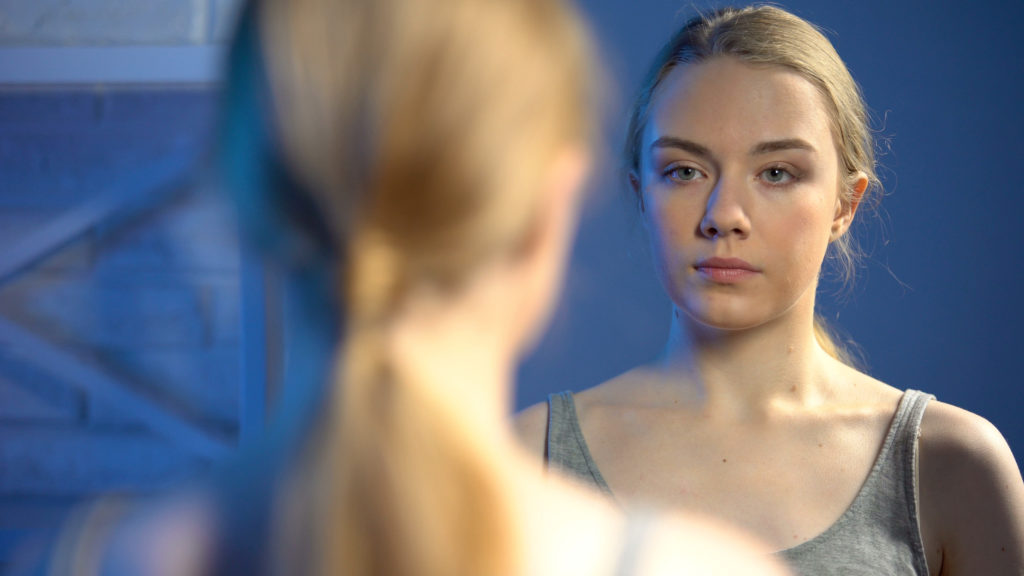As a child, I would always apply for the leadership roles, but I hardly ever got them, and I didn’t know why, so I stopped raising my hand.
At nineteen years old, I was diagnosed with Attention Deficit Hyperactivity Disorder (ADHD). It was liberating. I finally felt like someone had told me “you’re not dumb”. Before I got tested, I subconsciously assumed a diagnosis would fix everything, and, for a couple of months it did. My head had never been as quiet as it was on Ritalin, I’d never been able to sit down and do all of my assignments on time and I felt like I could finally explain to people why I am the way I am. I spent months explaining myself to people, obsessing over all the symptoms they missed and learning how to navigate the world all over again. However, the most obvious thing that a diagnosis didn’t fix was my self-esteem, and, as this significant truth slowly sunk in, I realised that knowing I had ADHD didn’t take it away.
When I was younger, I would go for every opportunity under the sun. I watched my friends receive the opportunities I wanted, and I didn’t know why I didn’t get picked. In year five, I proudly stood on stage to deliver my speech to be in the running for school prefect. My heart still mourns for eleven-year-old me as I ran into my mum’s arms sobbing because I didn’t get chosen. In year eleven, I withdrew my name from the running for prefect. What happened between year five and year eleven?

My whole life I knew I was as smart as my friends. I watched them excel and be rewarded for it; when I could barely muster a B grade. I constantly ran for leadership roles, but rarely got them, and I had no idea why. It seemed like the teachers could see my irrationality, inattention and memory fault but didn’t connect it to ADHD. Like so many other girls before me, and sadly, after me too, my symptoms weren’t recognised.
It wasn’t until I left school and was diagnosed that I realised that the school system was set up to praise the neurotypical, intelligent and well-behaved students. It’s not that I wasn’t intelligent and well-behaved, it’s just that the teachers also saw me walk in late to school with my hair a mess and no homework. I cannot tell you how many school reports stated: “Margot has the potential to excel in this subject but does not apply herself”. Eventually the school system taught me the only way to succeed was to stop trying. So, I stopped studying for tests, I stopped going for opportunities and I stopped speaking up. This drove me insane, because I knew I could do it – I just didn’t know how.
As a girl you learn to mask your ADHD quickly. You learn how to mirror the people around you, and you stop putting yourself in situations that exposes symptoms of your disorder. For me; I played dumb. I would laugh away forgetfulness and inattentiveness, I stopped raising my hand and I stopped contributing any of my thoughts or ideas. Any of my teachers or various psychologists who noticed this performance, put it down to me being “shy” or “low self-esteem”, both of which were accurate, but both of which were a by-product of my undiagnosed disorder. It’s hard being a girl and having ADHD. Not only is every system set up to benefit men anyway, but ADHD is severely under diagnosed in girls. Sadly, my story is very common for young girls, and I was lucky to be diagnosed as young as I was, let alone at all.

I try to be as open as possible about my ADHD, and what I’ve learnt is that people reject what they don’t understand – no one actually knows what ADHD is. I try to normalise my ADHD symptoms and familiarise people with them, in the hopes to minimise the self-esteem damage ADHD causes in young girls. To me leadership is using my voice to share my experience, to bridge that gap, so that young girls don’t have to mask their disorders to be given the same opportunities as their friends. If even just one girl hears what I have to say, and understands she is valid, that is leadership to me. Now I’m slowly learning how to confidently raise my hand again, with ADHD on my side.
Margot is 20 years old and grew up in Sydney’s inner west before moving to Canberra for University when she was 18. Margot is now entering her third year at the Australian National University, studying a Bachelor of Science, with the hopes of becoming a Genetic Counsellor in the future.
Disclaimer
The blog posts do not necessarily represent the views and opinions of Women with Disabilities Australia (WWDA), and blog posts are contributions made by women, girls or non-binary persons with disability about what leadership means to them. All possible care has been taken in the preparation of the information contained in this document. WWDA disclaims any liability for the accuracy and sufficiency of the information and under no circumstances shall be liable in negligence or otherwise in or arising out of the preparation or supply of any of the information aforesaid.

